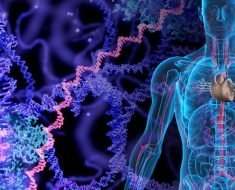Scientists who study the brain are advancing the field so rapidly that they are creating what many would perceive as a good problem: Those who apply the research findings—such as mental health clinicians—are having difficulty keeping up.
“There’s no way a human can keep track (of all this information) and simply make decisions,” said Indika Kahanda, assistant professor in MSU’s Gianforte School of Computing. “That’s where computer scientists come in.”
In collaboration with the Montana branch of the National Alliance on Mental Illness, Kahanda is leading a project to develop software that can sift through millions of online articles about mental illness and distill the most relevant information. For example, the software could detect new findings about the most effective treatments for depression, which can lead to suicide.
“If we can make this knowledge more available, we could save lives,” Kahanda said. “That’s one of my main motivations.”
The software uses a process called text mining to monitor new research published in online databases including PubMed, which is maintained by the U.S. National Library of Medicine at the National Institutes of Health. PubMed has its own set of advanced search tools and can send alerts when new research is published, but Kahanda’s software applies new, sophisticated computing techniques that could allow users to find relevant information more precisely.
For instance, the software—which in its prototype stage is called BRcurator, where BR stands for brain research—searches for key words within article text but also considers different combinations of words around the key word. Using what is called machine learning, the software can also adapt based on feedback from the user, making future automated searches more accurate.
In 2015, Matt Kuntz, executive director of the National Alliance on Mental Illness for Montana, brought the idea of a better article curation tool to MSU’s Office of Research and Economic Development. “It was obvious to us that brain research was accumulating so quickly that it was not realistic for anyone to keep up with it,” Kuntz said. “There needed to be a way to pull it together and make it more available to researchers, clinicians and the people affected by these conditions.”
MSU’s research office connected Kuntz with faculty in MSU’s Gianforte School of Computing. After some preliminary work, Kahanda took over the project after he was hired in 2017.
Kahanda’s experience with applying machine learning technology “was the perfect fit,” Kuntz said.
According to Kuntz and Kahanda, initial testing shows that BRcurator works, and one of the next steps is to develop a software interface to make it easier to use.
“We’ve proven that we’re able to consolidate brain research across multiple medical research databases and specifically look for categories such as medications that are being studied for different conditions,” said Kuntz, who was appointed interim director of MSU’s Center for Mental Health Research and Recovery on Aug. 1.
The article curation tool could change how people access a wide range of research publications, Kahanda said. For instance, currently there are human experts called biocurators who distill technical research about genetics and other biological science into write-ups about the most relevant findings.
“When I talk with them, they say they sometimes spend up to eight hours on a complex article,” Kahanda said. “We’re not trying to replace humans. We’re just trying to make (this work) easier and quicker.”
According to Kahanda, advances in computing are making it increasingly possible to develop ways that computers can function more dynamically and interactively, essentially learning from human users. Some of the developments have occurred since this project started, Kahanda said.
Source: Read Full Article





